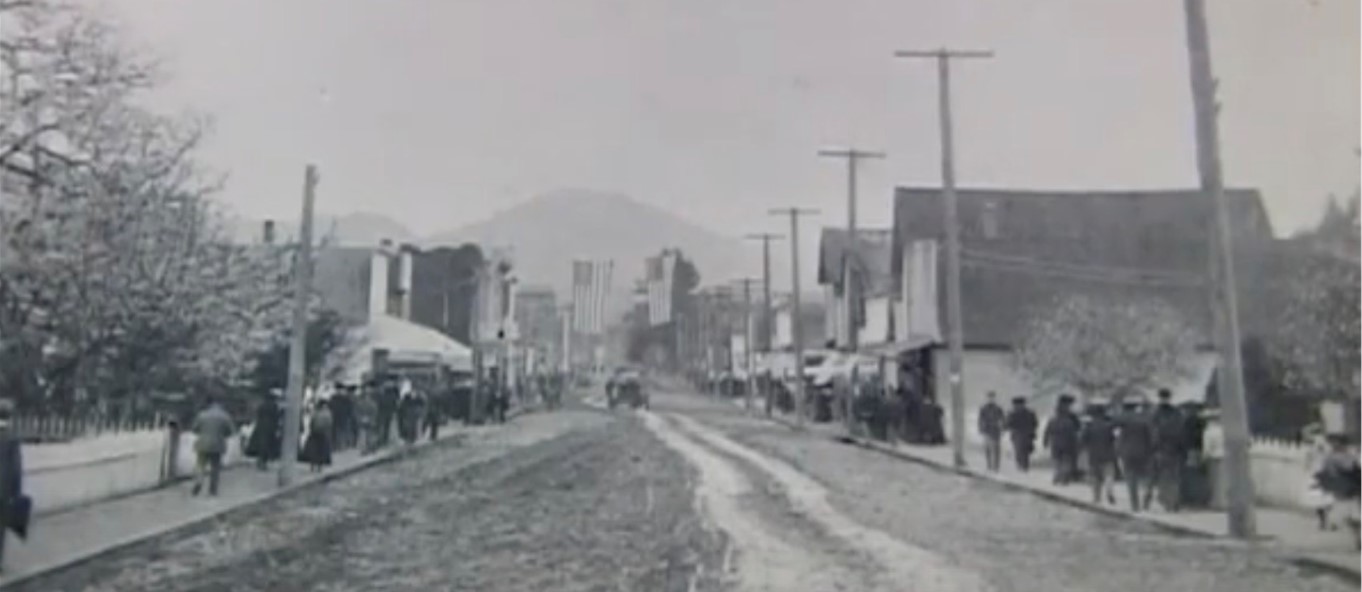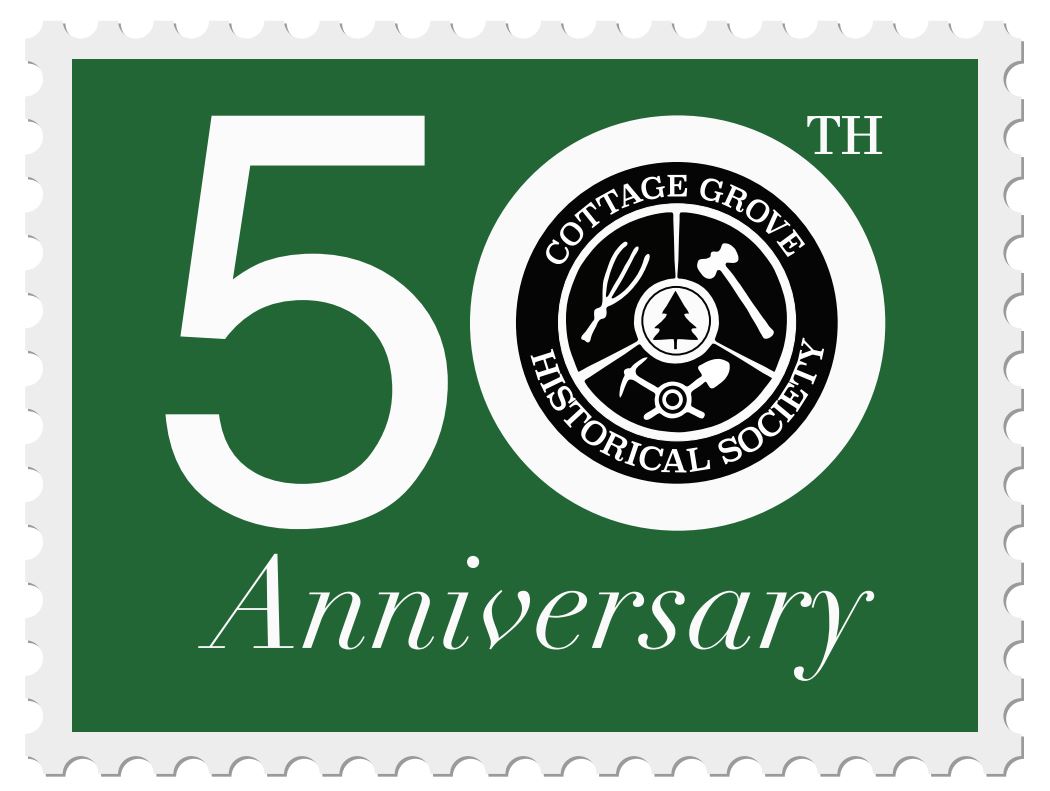
Pic: Main Street in 1902, Looking east from bridge. You can see Cerro Gordo in the background.
As we learned in our first lesson, the city of Cottage Grove originally developed on the west side of the Coast Fork river. It was nicknamed Slabtown for the wooden slabs that covered the muddy roads and sidewalks. All went along fine until the Oregon and California Railroad came through on the east side of the river in 1872. The town started to gradually build up along what is now Main Street toward the Railroad Depot, where Bohemia Park is today. This left the citizens on the west side a little miffed because they wanted the heart of the town to stay where it was.
On February 11, 1887 Cottage Grove was incorporated as a town. The West Side was called Cottage Grove and the East Side was referred to as “East” Cottage Grove. This made the East Siders unhappy, so they began to call their side of town Lemati, an Indian word meaning “peaceful valley”. The best explanation we have seen on how to pronounce Lemati came from a 1963 newspaper article about the feud. It read “you pronounce Lemati as if you are saying Lemmuh tie your shoe”.
By 1894 the feud had reached such proportions that the East Siders decided to secede and incorporate as a new town. The West Siders fought the petition at the State Capitol in Salem but the East Siders won the battle and the new city of Lemati officially came into existence.
The trouble only escalated from there. Cottage Grove passed an ordinance prohibiting bicycle riding on the sidewalks. When Marshal Baker caught the Lemati Mayor’s daughter riding her bicycle on his side of town, he escorted her back across the bridge. The following day Marshal Baker forgot to remove his badge when he went across the bridge to go to the railroad station to get the mail, and the Lemati city fathers put him in jail. The fight over the mail was a particular sticking point. The story was that the Post Office was “kidnapped” at one point and moved across the river, but that tale may be an early urban legend.
In the meantime, the Bohemia Mines boomed and the populations of the two towns went from a combined total of 800 to 3,000 in a few short years. The rapid growth and change made the feud seem like a petty distraction. The following story appeared in the January 5th 1899 edition of the Eugene Register Guard…”At a mass meeting tonight the citizens of Cottage Grove and Lemati approved the charter under which the two towns are consolidated under the old name of Cottage Grove. Some opposition to the movement was expected from many of the residents of Lemati but it did not materialize, although a number of persons who were outspoken against consolidation were present. Their failure to make any fight in the open meeting is accounted for by the supposition that they either consider the whole proceeding illegal, or that they will attempt to defeat the charter in the legislature.” As it happened the unification stood, the feud became part of history, and Cottage Grove entered the 20th century as one city.
